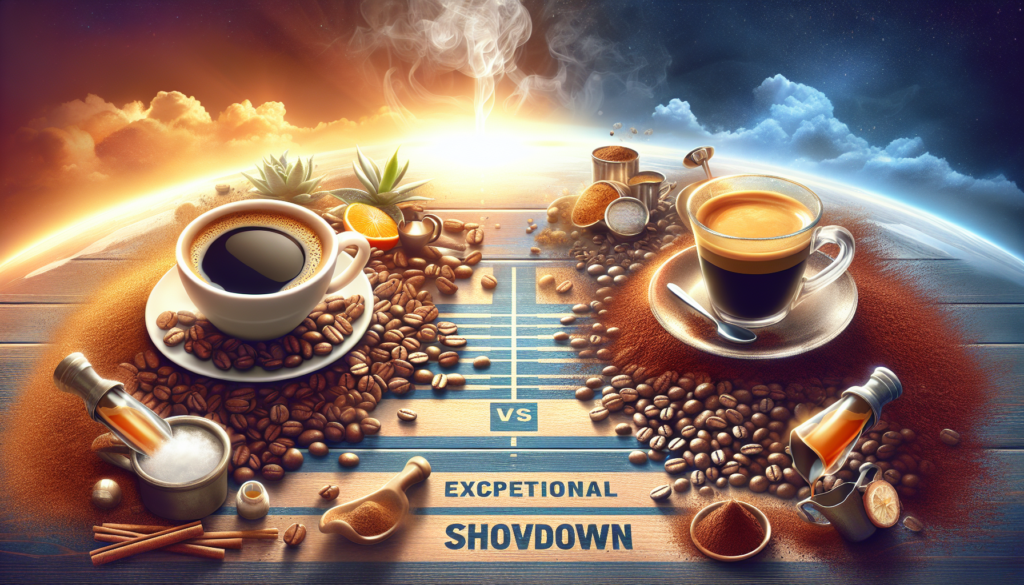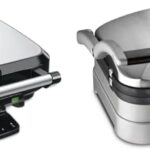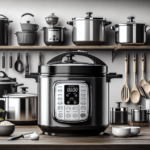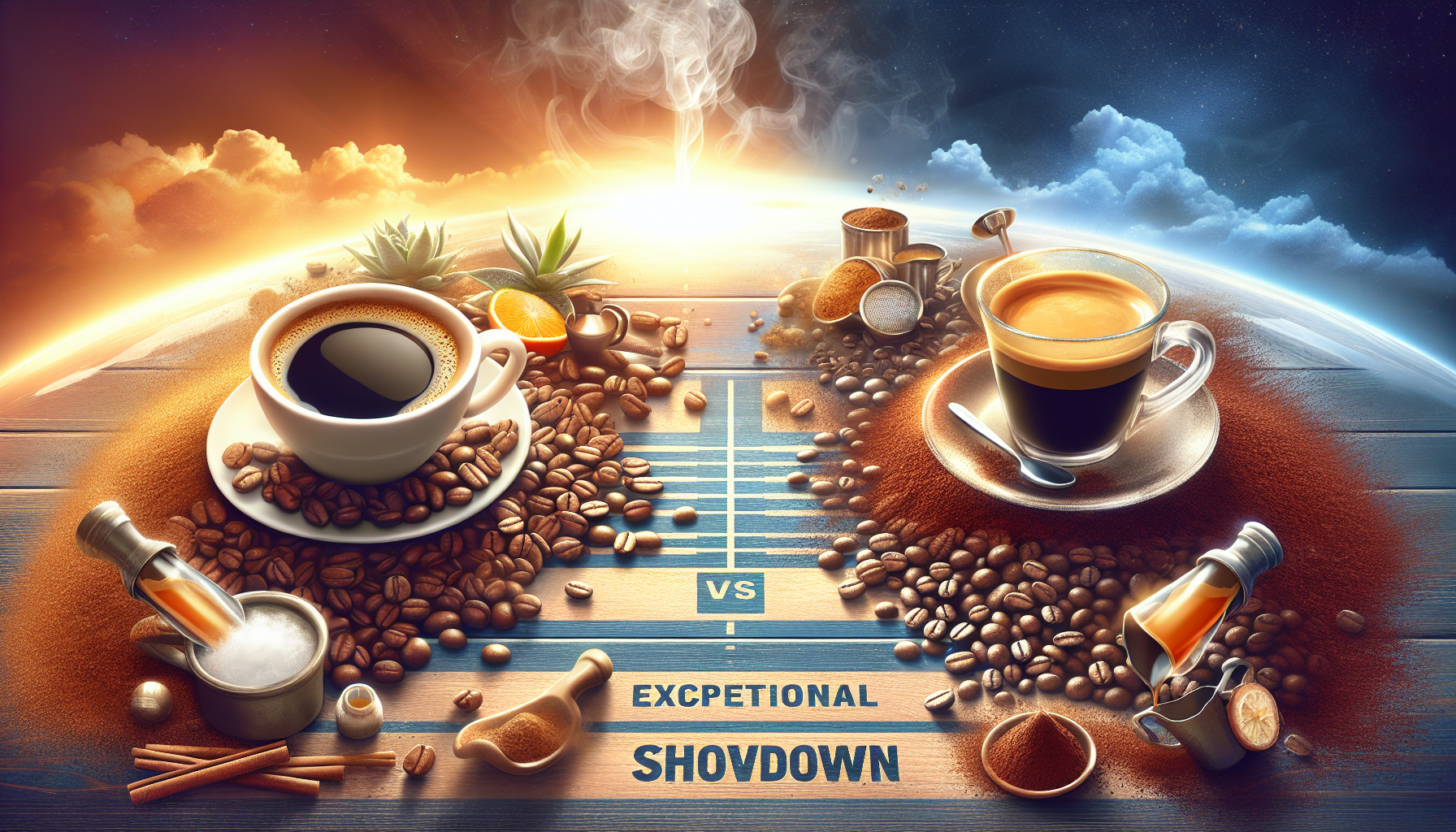
Have you ever wondered which packs a bigger punch: a cup of coffee or a shot of espresso? Coffee lovers often debate over the strength of these two popular caffeine-rich beverages. While they both offer an instant jolt of energy, the stark differences between coffee and espresso go beyond their serving sizes. From brewing methods to caffeine content, we’ll explore the factors that determine which is truly stronger—coffee or espresso.
Cup of Coffee
Caffeine Content
A cup of coffee typically contains more caffeine than a shot of espresso. On average, an 8-ounce cup of brewed coffee contains about 95 milligrams of caffeine, while a 1-ounce shot of espresso contains around 63 milligrams. However, it is important to note that the caffeine content can vary depending on various factors such as the type of coffee bean used and the brewing method.
Brewing Method
Coffee can be brewed using different methods, such as drip brewing, French press, or pour-over. Each method has its own nuances that can affect the taste and strength of the coffee. Drip brewing, for example, uses a machine to pass hot water through a filter containing ground coffee, resulting in a smoother and milder flavor. On the other hand, espresso is made by forcing hot water through finely ground coffee under high pressure. This process extracts a strong and concentrated flavor from the coffee beans.
Serving Size
A typical serving size for a cup of coffee is around 8 ounces, although this can vary depending on personal preference. Some people prefer a larger cup of coffee to savor over a longer period, while others opt for smaller sizes. It’s worth noting that the caffeine content mentioned earlier is based on an average 8-ounce cup. As for espresso, it is commonly served in a shot glass or demitasse cup, which is around 1 ounce.
Time to Drink
When it comes to enjoying a cup of coffee, many people take their time to savor the taste and aroma. This means that coffee is often consumed gradually over a longer period, allowing for a more relaxed and extended experience. On the other hand, espresso is traditionally consumed quickly, usually in one or two sips. This quick consumption is due to the strong and concentrated nature of espresso, making it a popular choice for those seeking a quick pick-me-up or a shot of energy.
Stimulant Properties
Both coffee and espresso are known for their stimulant properties, primarily due to the presence of caffeine. Caffeine functions as a central nervous system stimulant, which means it can help increase alertness, reduce fatigue, and improve focus and concentration. Whether you choose a cup of coffee or a shot of espresso, the caffeine content can provide a quick energy boost to help you stay awake and alert.
Effects on Alertness
Both coffee and espresso can have similar effects on alertness due to their caffeine content. When consumed, caffeine stimulates the central nervous system, blocking the effects of adenosine (a substance that promotes sleepiness), and promoting the release of neurotransmitters like dopamine and norepinephrine. This results in increased alertness and improved cognitive function. However, since coffee contains more caffeine per serving, it may provide a more noticeable and prolonged effect on alertness compared to espresso.
Effects on Mood
Coffee and espresso can also have positive effects on mood. The caffeine in these beverages has been shown to enhance mood and improve feelings of well-being. It can increase the release of dopamine, a neurotransmitter associated with pleasure and reward, which can elevate mood and contribute to a sense of happiness. Additionally, the act of enjoying a cup of coffee or a shot of espresso can be a comforting ritual, providing a moment of relaxation and enjoyment that can positively impact mood.
Digestive Effects
One potential downside of coffee consumption for some individuals is its digestive effects. Coffee has been known to stimulate the production of stomach acid, which can lead to discomfort, heartburn, or even exacerbate certain digestive conditions. On the other hand, espresso, due to its concentrated nature, may be more likely to cause digestive issues in sensitive individuals. It’s important to listen to your body and monitor your own tolerance when consuming coffee or espresso.
Health Benefits
Both coffee and espresso come with their own set of potential health benefits. Studies have shown that moderate coffee consumption (around 3-5 cups per day) may be associated with a reduced risk of various conditions, such as type 2 diabetes, Parkinson’s disease, and certain types of cancer. This may be attributed to the antioxidants and other bioactive compounds found in coffee. Similarly, espresso can offer similar health benefits due to its coffee base, although the smaller serving size can make it challenging to consume the same amount of beneficial compounds as found in multiple cups of coffee.
Side Effects
While moderate coffee consumption is generally considered safe for most individuals, excessive intake can lead to side effects, such as restlessness, jitteriness, increased heart rate, and sleep disturbances. Drinking too much coffee or espresso can also cause dehydration due to its diuretic properties. Additionally, the high levels of caffeine in coffee and espresso can have adverse effects on individuals with certain health conditions, including anxiety disorders, heart problems, or pregnancy. It’s recommended to consume these beverages in moderation and be mindful of personal tolerance and any potential health concerns.
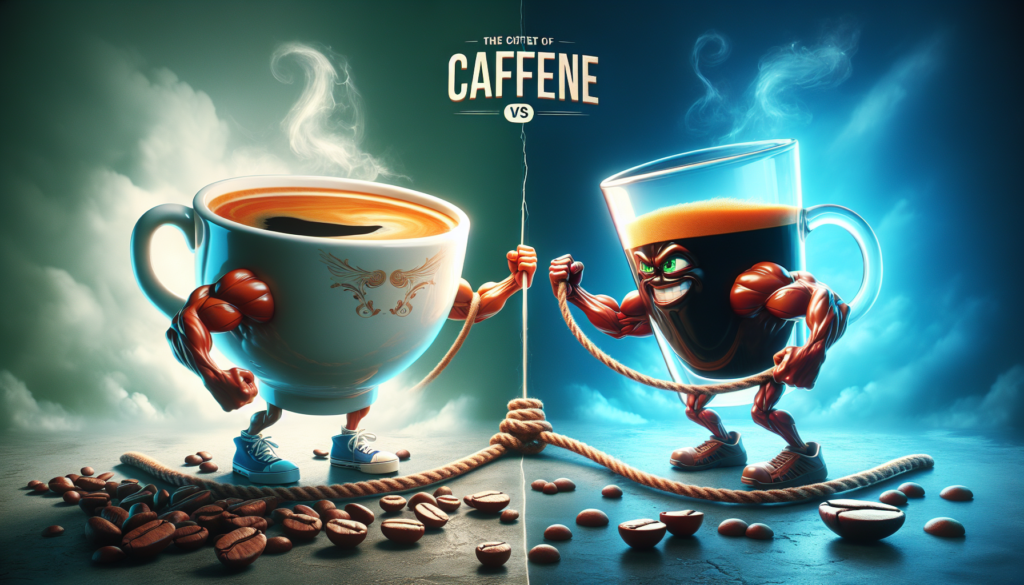
Shot of Espresso
Caffeine Content
As mentioned earlier, a shot of espresso contains approximately 63 milligrams of caffeine. While this is generally less than an average cup of coffee, espresso has a higher concentration of caffeine due to its serving size. The smaller volume allows for a stronger and more potent shot of energy that can be consumed quickly.
Brewing Method
Espresso is brewed using an espresso machine, which uses pressure to force hot water through finely ground coffee in a relatively short amount of time (typically around 25-30 seconds). This process extracts the rich flavors and oils from the coffee beans, resulting in a concentrated shot with a distinct aroma and taste.
Serving Size
A shot of espresso is typically served in a small cup or shot glass, measuring around 1 ounce. The smaller serving size allows for a quick and powerful burst of flavor and caffeine. However, it’s worth noting that some espresso-based drinks, such as a double shot or a latte, may contain more than one shot of espresso, resulting in a larger serving size and potentially higher caffeine content.
Time to Drink
Espresso is meant to be consumed quickly, usually in one or two sips. This is in contrast to the more leisurely consumption of a cup of coffee, which can be enjoyed over an extended period. The quick consumption of espresso is a popular choice for those seeking an immediate energy boost or a concentrated burst of flavor.
Stimulant Properties
Like coffee, espresso contains caffeine, which acts as a stimulant on the central nervous system. The concentrated nature of espresso allows for a faster and more intense release of caffeine into the bloodstream, resulting in a quick pick-me-up and increased alertness.
Effects on Alertness
Due to its higher concentration of caffeine, espresso can provide a more immediate and noticeable effect on alertness compared to a cup of coffee. The quick consumption of espresso allows for a faster absorption of caffeine, leading to a rapid increase in energy levels and heightened mental focus. This makes espresso a popular choice for individuals who need a quick and strong energy boost.
Effects on Mood
Similar to coffee, espresso can also have a positive impact on mood. The release of dopamine, facilitated by the caffeine in espresso, can lead to an improved sense of well-being and happiness. Additionally, the ritual of enjoying a shot of espresso can create a moment of relaxation and enjoyment, contributing to an overall positive mood.
Digestive Effects
As mentioned earlier, due to its concentrated nature, espresso may have a stronger impact on the digestive system compared to a standard cup of coffee. Some individuals may experience digestive discomfort, such as acid reflux or stomach irritation, after consuming espresso. It’s important to pay attention to your own tolerance and any potential digestive issues when consuming espresso.
Health Benefits
The potential health benefits of espresso are similar to those of coffee, as espresso is made from coffee beans. However, due to its smaller serving size, it may be more challenging to consume a significant amount of beneficial compounds found in coffee through espresso alone. That being said, if consumed in moderation, espresso can still provide some of the antioxidant and health-promoting benefits associated with coffee consumption.
Side Effects
Just like coffee, excessive consumption of espresso can lead to side effects such as restlessness, increased heart rate, and sleep disturbances. Additionally, the concentrated caffeine content in espresso may affect individuals differently, potentially exacerbating certain health conditions or causing discomfort. As with coffee, it is important to consume espresso in moderation and be mindful of personal tolerance and any potential health concerns.
